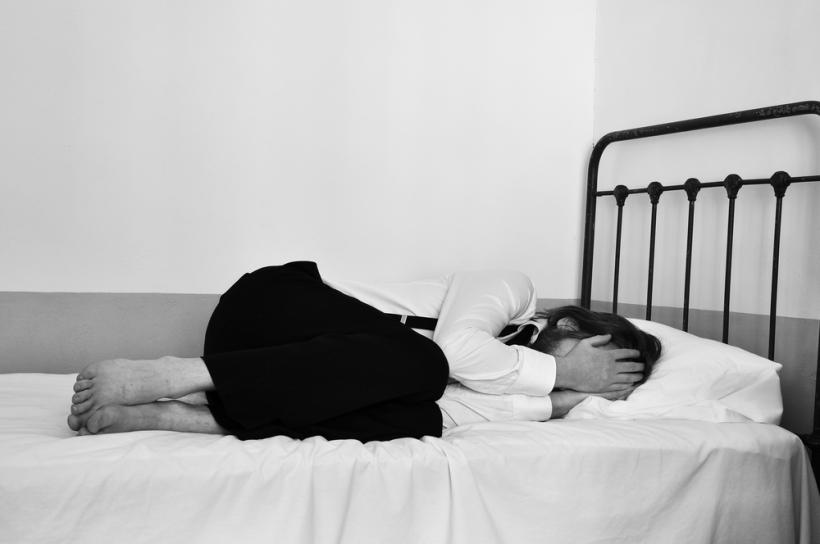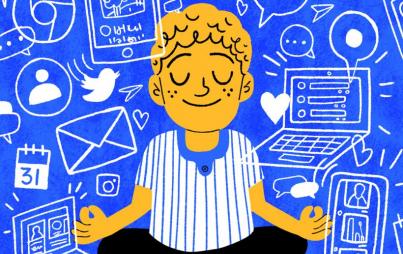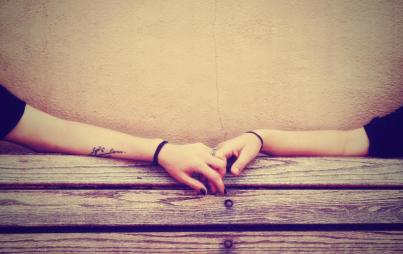
The scope and effect of phobias are often minimized and downplayed, making the sufferer feel less validated and poorly about themselves.
Sure, you’ve probably heard of super common phobias like claustrophobia, but what about less common, but still very real and debilitating phobias? Phobias can affect your daily life, limit your activities, and hold you back from living life to the fullest. The scope and effect of phobias are often minimized and downplayed by people who don’t suffer from phobias, making the sufferer feel less validated and poorly about themselves.
It’s important to understand different phobias you may have never heard of (or have limited knowledge of), so you can be more understanding of your phobic friends and loved ones. Here are seven phobias to learn about.
Emetophobia
Emetophobia is the fear of vomiting. This can include being afraid of throwing up yourself or seeing somebody else throw up, even if it's happening in a movie or TV show. People with serious emetophobia often take preventative measures to make sure the chances of encountering vomit are minimal. Avoidances can range from not eating food from restaurants for fear of food poisoning, or being afraid of pregnancy due to the nausea and vomiting that may come along with morning sickness.
Nomophobia
A relatively new — but genuine — phobia is nomophobia, the fear of being without your cell phone or service. Now, of course in this modern age, we’re all pretty obsessed with our phones and are always using them. Nomophobia is different, as the thought or the action of being without a phone, or even of a dying phone battery, can result in a physical reaction including higher blood pressure, fast heartbeat, and other anxiety-related symptoms. People with nomophobia often have a very unhealthy addiction to texting and social media.
Phobophobia
Folks who have an extreme fear about developing a phobia have phobophobia. A person with phobophobia may already have one or two phobias or could have none at all except phobophobia, excessively worrying they might develop a phobia that’s even worse. You can look at this phobia as the fear of fear itself. As you might imagine, this can become a vicious and rather anxiety provoking cycle. This phobia is usually associated with anxiety disorders. It’s likely that someone with phobophobia will avoid anything that is even anxiety-provoking in the slightest bit because they want to stay in their comfortable safety zone.
Carcinophobia
The intense fear of getting cancer is called carcinophobia. Sure, nobody wants to get cancer, and everyone’s afraid of cancer to some degree, but people with carcinophobia go to great lengths to steer clear of cancer. There are many things known to cause — or possibly cause — cancer, from smoking (of course) to certain deodorants to our smartphones. Those with carcinophobia will try to avoid carcinogens (things that can cause cancer) and are often hypochondriacs as well. They may be extremely paranoid that any physical sensation they feel could be a sign of imminent cancer, or that any lump or bump may be a cancerous tumor.
Vehophobia
A phobia common to people who have gotten in or witnessed car accidents is vehophobia, or, the fear of driving. The phobia can present itself in many ways. Some people who suffer may be fine driving with someone else, but if they needed to drive somewhere by themselves, they’d be paralyzed with fear. Additionally, people living with vehophobia may deal with other driving specific fears, like driving on highways or freeways. Vehophobia can coexist with concerns about losing control or dying. This phobia can severely hinder somebody’s life and freedom, as driving is often necessary to get around in many parts of the world.
Aichmophobia
The irrational fear of sharp objects falls under the umbrella of aichmophobia. People who have the phobia may have specific sharp objects they’re afraid of, like a newly sharpened pencil, or sharp objects in general. This can lead to a lot of avoidance of aspects of everyday life like chopping food with a sharp knife or getting necessary shots at a doctor’s appointment. The fear of needles and injections is called trypanophobia, and can result in fainting even upon just seeing a needle.
Ommetaphobia
The severe fear of eyes and situations pertaining to eyes is called ommetaphobia. This can include multiple scenarios ranging from looking into someone else’s eyes, or having your eyes touched by somebody–even an eye doctor! As you can imagine, this can result in health problems if somebody with ommetaphobia has an issue with his or her eye and refuses to let a doctor touch the eye to take a look... or even if somebody needs vision correction by way of glasses or contacts. If someone with ommetaphobia is afraid of looking someone else in the eye, it is often associated with social anxiety.
Next time you hear someone speaking about a phobia or see someone fearing something that doesn’t necessarily seem scary to you, be compassionate–and never make fun of someone for the phobias they face. Everybody is different, fighting their own battles, and confronting their own fears.








